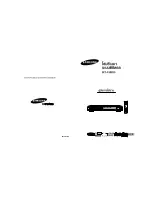
Sutron Corporation X-Link Operations & Maintenance Manual, Rev 1.63 5/24/2016 pg. 48
5.
Telemetry
Every X-Link features a built in communication device that is used to deliver data
collected from sensors.
GPRSLink, HSPALink, and CDMALink use the cell phone network to send the
data.
IRIDIUMLink uses Iridium satellites for the data transmission.
X-Link can be set up to make scheduled transmissions, delivering sensor data on
a regular interval. This is a common method of receiving your environmental
data.
We use the shorthand name Tx to mean transmission. ReTx means
retransmission.
Every X-Link station can be remotely accessed while it is in the field in order to
change the setup, check the status, access the log, and perform nearly any other
operation.
A GPRSLink, HSPALink, or CDMALink may be remotely accessed using
LinkComm.
An IRIDIUMLink unit cannot establish a remote connection to LinkComm.
However, messages may be sent to any IRIDIUMLink via email, and
IRIDIUMLink can reply to them. It is possible to accomplish most any
operation via those messages including setup change, status check, and log
access.
X-Link can be set up for alarms. When a sensor reading reaches a user set
threshold, X-Link can send transmissions and messages informing the customer
about the alarm condition. This is useful for applications where it is important to
know about environmental conditions as soon as they happen.
Additionally, GPRSLink, HSPALink, and CDMALink units can be set up to receive
incoming connections via the
Listening
feature. In this case, a program like the
Sutron AutoPoll can be used to periodically gather data from X-Link. When
scheduled transmissions are set up, X-Link initiates the data transfer; in
Listening
mode, an application starts the communication with X-Link.
X-Link performs message checking at least once every 24 hours. Version 1.46 is
required for message checking. A message check is the process of using X-Link's
modem to see if there are any messages waiting.
Several types of transmissions are sent by X-Link:
















































